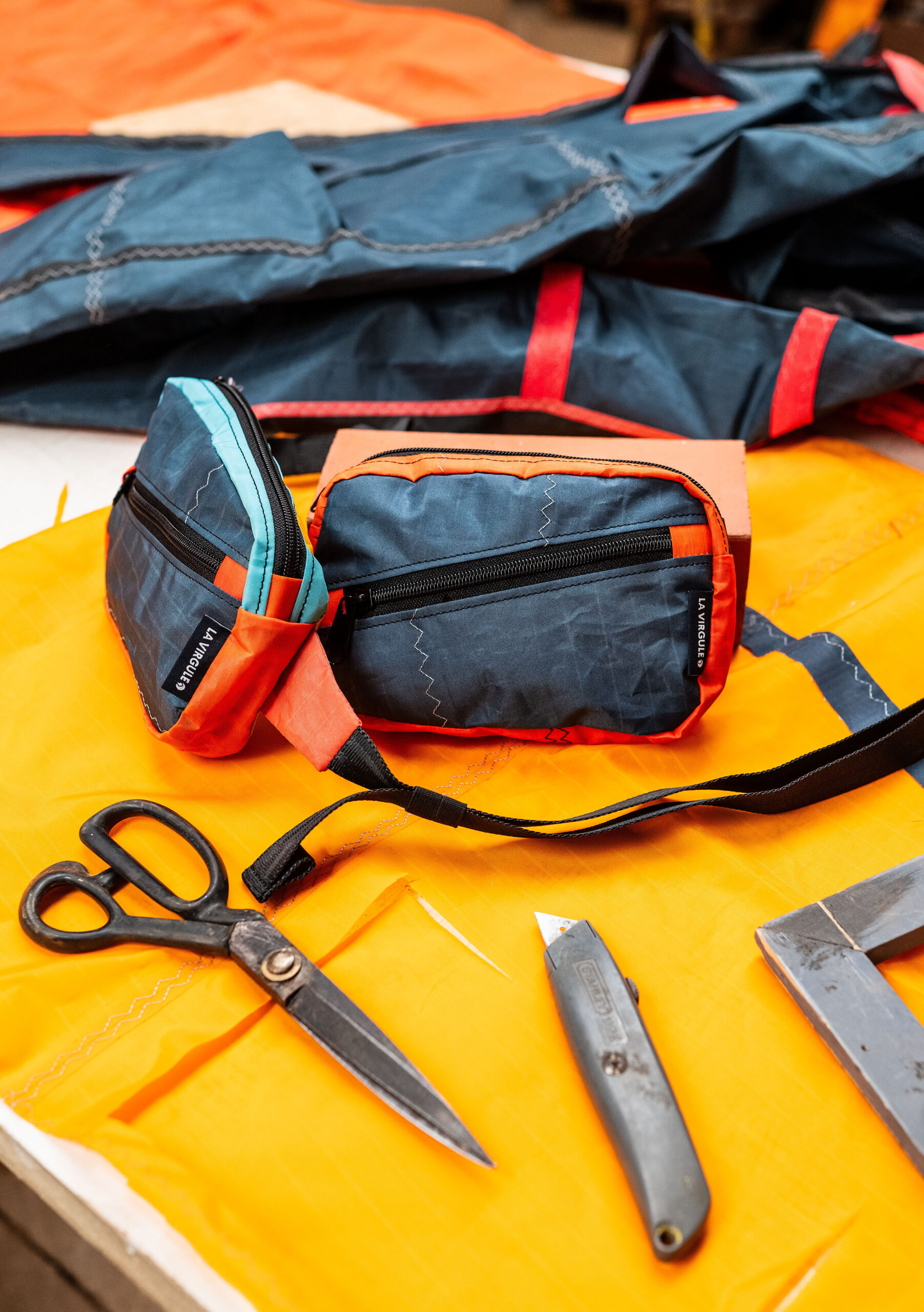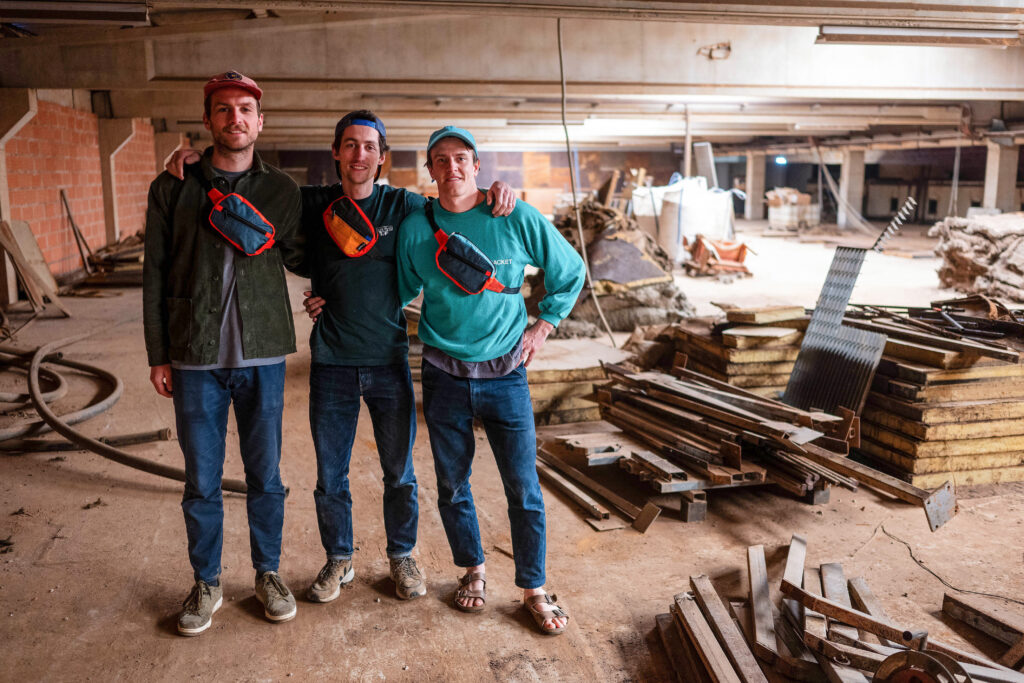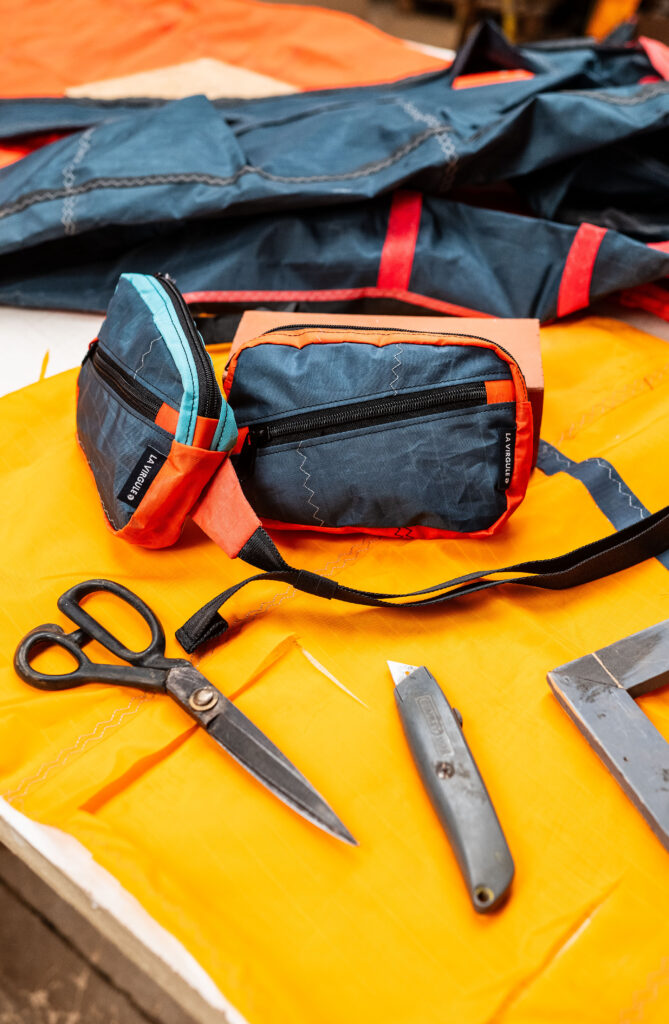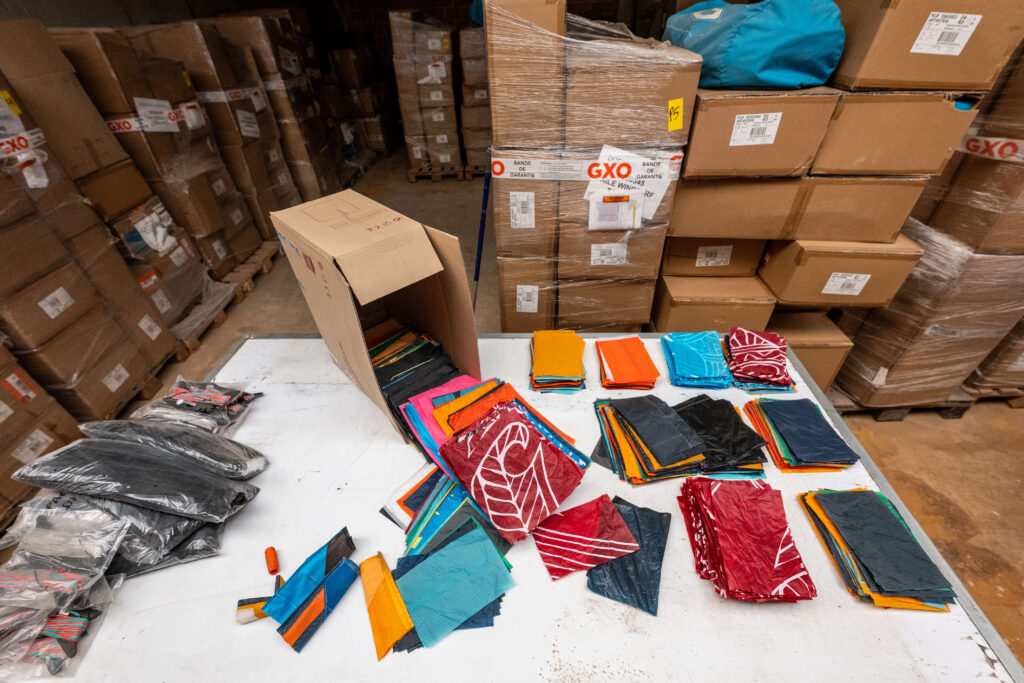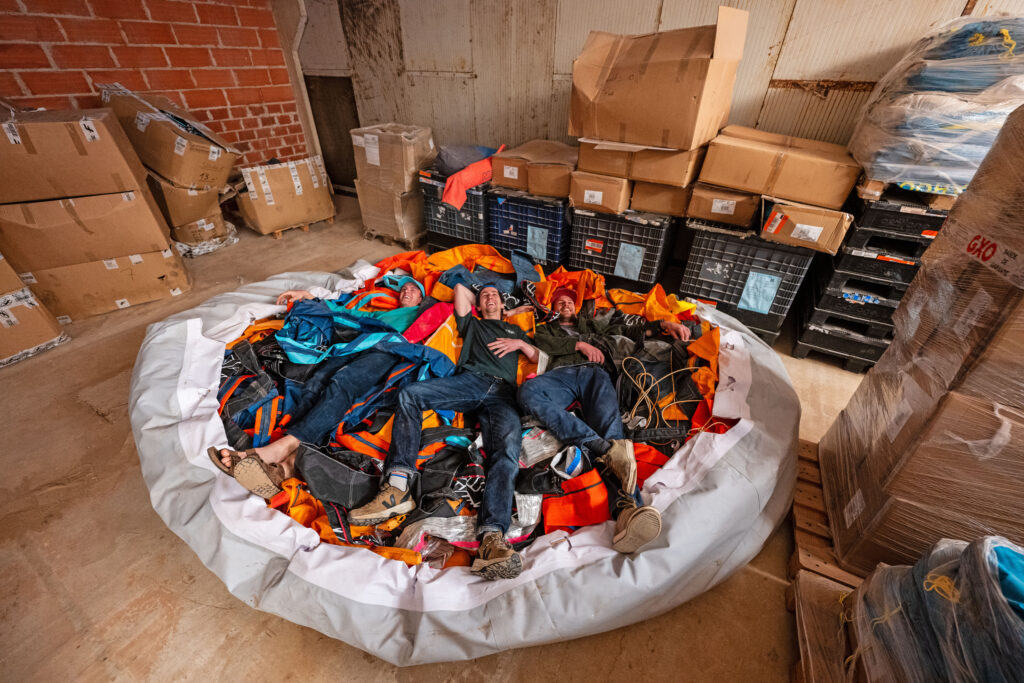F-ONE is proud to contribute to the upcycling of kite and wing prototypes, as well as old unusable ones, and give them a second life thanks to the partnership with French company La Virgule.
F-ONE is proud to contribute to the upcycling of kite and wing prototypes, as well as old unusable ones, and give them a second life thanks to the partnership with French company La Virgule.
Founded in 2019, its mission is to make the outdoor world circular. La Virgule has adopted a production system that upcycles and reuses sports equipment materials to create new products that are practical, sustainable, repairable and truly stylish.
Made in Europe, these products incorporate not only our kites and wings, but also semi-rigid boat fabric, climbing ropes, safety belts, and much more.
Since the launch of the partnership in early 2022, we have already made three shipments (February 2022, March 2023 and June 2024) for a total of 23 pallets and around 1,000 kites and wings. We’ve also donated old MANERA leashes, pads and bags.
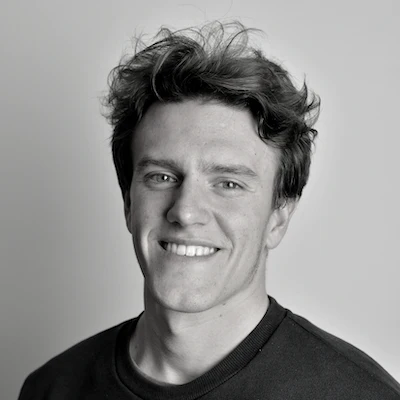
Maxime Labat
We spoke to Maxime Labat, co-founder of La Virgule.
How did La Virgule come about ?
We’re three co-founders, Benoit, Nathan and I, all passionate about the outdoors. We spend a lot of time on the water, in the mountains, on bikes and so on. We quickly realized that the equipment we use for our hobbies is extremely technical, light and resistant, and therefore made from outstanding materials, but that have no end-of-life solution.
Today, around 10 million kilos of these technical materials are incinerated or buried. It’s very complicated, if not impossible, to shred and recycle these sports textiles for reuse.
Secondly, we noticed a very strong demand for all sorts of bags. Millions of backpacks are sold in Europe every year; it’s a fast-growing consumer product. So we thought we might find a solution to these two problems simultaneously. And so La Virgule was born.
We collect these sports materials and then cut, wash and sew them to create new products. We work with professional workshops in France, Portugal and Germany, that prepare the raw materials or manufacture the products, using machines adapted to our specifications.
So we come and transform this waste, this end-of-life sports equipment, into backpacks, bike bags, fanny packs and much more. For the backpacks, for example, we use the tube materials of semi-rigid boats for the exterior, old safety belts for the shoulder straps, as well as climbing ropes and F-ONE kites and wings, notably for the internal pockets and computer compartment.
How did the partnership with F-ONE come about, and what is the upcycling process like for our kites and wings?
I’ve known about F-ONE since I was a kid, coming from the windsurfing world, and it’s always been a brand that I’ve admired. With the help of my network, I was able to get in touch with the bosses Raphaël and Julien Salles so that I could explain our process and discuss possible problems related to waste in their sports.
We quickly realized that we could already help with prototypes, which were of course difficult to resell or re-use, so we had to find solutions. In the beginning, we received six or seven pallets of kites and wings. We immediately set up processes to learn how to cut the products efficiently, prepare the materials, wash them, and so on.
When the wings are cut, we separate the bladder and the panels so that the material lies flat. Then, every piece is organized in different sizes (from XS to XXL), which enables us to standardize materials for the sewing room.
Not only is this much easier to work with, but it also gives us a great deal of stock visibility. We know exactly how much material we have, so we can think about how to allocate it to different products. For example, we know we won’t be able to use an XS offcut for a backpack, but it will be perfect for a fanny pack.
By the way, how does the design process work? Do you design the product first, then find the materials you can potentially use, or is it the other way around?
That’s what’s so interesting. Any designer would say that before creating a product, you have to establish the need. Then, once the plans are made, you go and find the material. But for us, it’s a bit of both. We have a process of design and analysis of needs, but also of analysis of resources.
Obviously, we look for a need among users, with the aim of creating products that really make sense and that will be used as intensively as possible. But very quickly, in parallel, we also look at the materials that are available and how they can be repurposed.
So, where have our kites and wings gone?
Around 3,100 “Gravelot” backpacks and 200 fanny packs have been created using F-ONE kites and wings. Overall, it’s great to see the impact of these revalorizations when you look at the life-cycle analysis of each product.
Our products are about 10 times less CO2-intensive than a “normal” backpack. This also has an effect on you. If we manage to increase the lifespan of a kite from 5 years to, say, 25 years, your impact is also divided by 5. It’s crazy, and quite exciting, when you think about it, considering that our bags are also guaranteed for life.
How do you see the future of this collaboration between F-ONE and La Virgule?
We’re already working on new products, including caps. Through one of our upcycling workshops, we’ve also developed a musette bag, which is like an ultra-light tote bag, made from climbing ropes and F-ONE kites. We still have lots of ideas, we’re very creative, so it’s non-stop.
My vision would be to go even further and find a way to collect old kites and wings from customers. Because, in fact, everyone is concerned, we all have the same problem. One day, your kite is shattered; either you discard it right away, or you ditch it at the back of your garage, forget about it for two years and then finally throw it away.
We’re really big consumers of materials, and kites and wings are perfect for upcycling. It would be incredible to be able to set up a flow of material collection directly from customers. And, of course, we’ll continue to find solutions and new projects so that eventually, this partnership will be a win-win situation.

